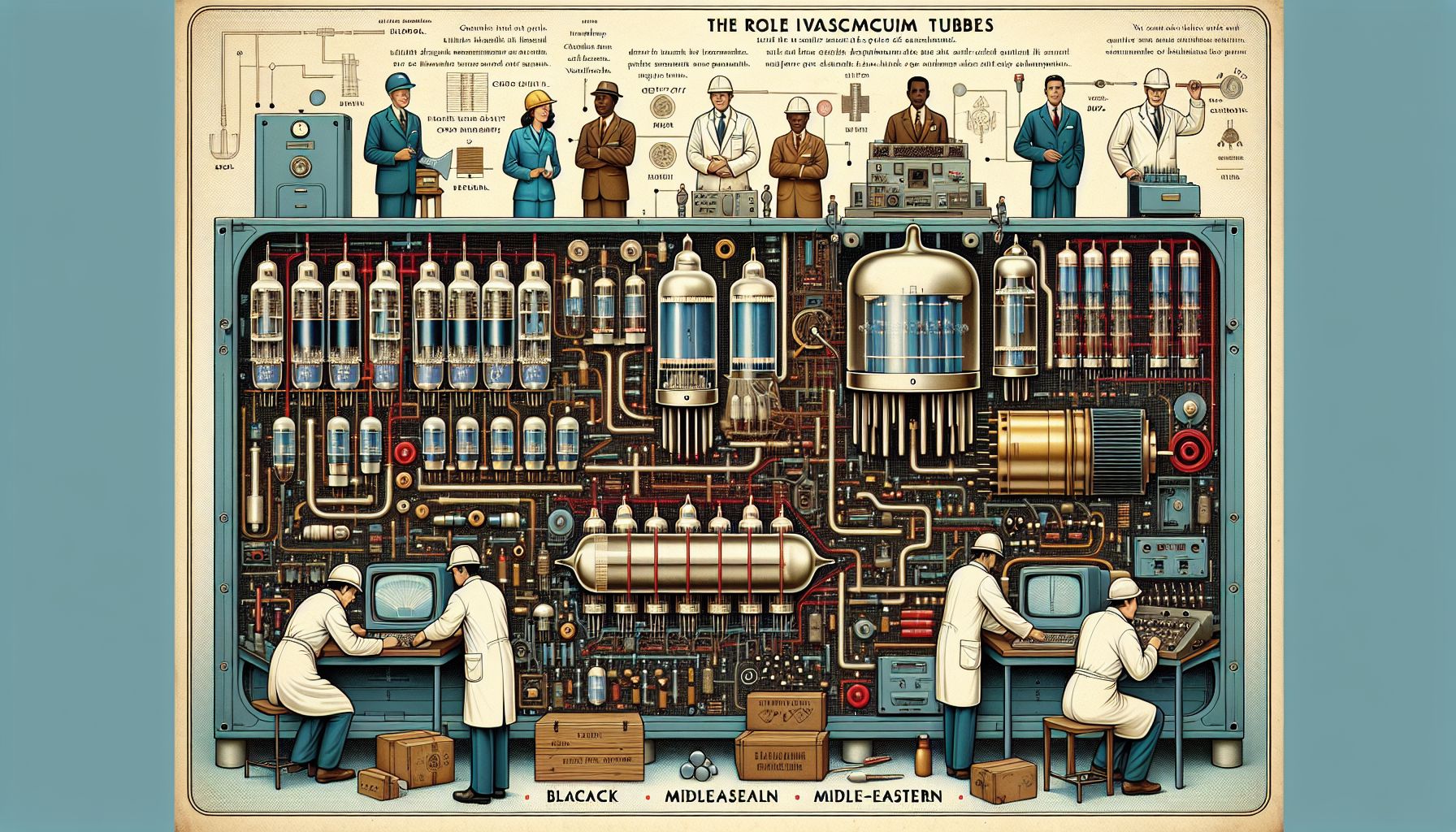📌 Let’s explore the topic in depth and see what insights we can uncover.
⚡ “Before the advent of speedy silicon chips, it was vacuum tubes, those bulky glass bulbs that powered the world’s first electronic computers. Discover the remarkable, yet often overlooked role these relics played in early computer development!”
The world of technology is a fast-paced, ever-evolving landscape. We’ve come a long way from the days of giant machines and punch cards to sleek, pocket-sized devices with capabilities beyond our wildest dreams. But have you ever wondered about the humble beginnings of these technological marvels? The journey to the sleek machines we know and use today began with a rather bulky and delicate device - the vacuum tube. Vacuum tubes were a crucial part of early computer development, acting as the precursor to the transistors that power our modern devices. This blog post aims to shed light on the vital role these tubes played in the inception and growth of the computer industry. So, let’s journey back in time and explore the fascinating world of vacuum tubes and early computing!
📜 The Dawn of the Computer Age: Vacuum Tubes Take the Stage

"Unveiling the Vacuum Tubes: Birth of Computing"
The vacuum tube, also known as an electron tube, was one of the most significant components of early computing. These tubes were essentially sealed glass bulbs that contained multiple electrodes. When current was applied, it would produce a flow of electrons from one electrode to the other, thus enabling the control of electrical signals. The first electronic computers, like the Colossus and the ENIAC, were built using thousands of these vacuum tubes. These machines were monstrous in size, often filling entire rooms, and generated a considerable amount of heat. However, despite their size and other challenges, they were able to perform calculations at unprecedented speeds, effectively kickstarting the digital age.
💡 The Workings of a Vacuum Tube
Imagine a vacuum tube as a busy city intersection, with the electrons as vehicles. The electrodes act as traffic lights, controlling the flow of these ‘vehicles’. When the light turns green (i.e., when a current is applied), the electrons can move from one electrode (anode) to another (cathode). This ability to control the flow of electrons meant that vacuum tubes could be used to amplify signals or act as switches - two functions vital for early computing. In a computer, these tubes were used to represent the binary digits, or bits, 0 and 1. A tube in the ‘off’ state represented a 0, and one in the ‘on’ state represented a 1. By controlling the state of these tubes, early computers could carry out basic mathematical operations, the foundation of all computing.
🚀 Vacuum Tubes and the Rise of Computers
The application of vacuum tubes in computers was a game-changer. For the first time, machines could perform calculations at lightning-fast speeds, a far cry from manual calculations or even mechanical calculating machines. The ENIAC, for instance, was said to be able to calculate a trajectory faster than the actual projectile could travel! However, the use of vacuum tubes was not without its challenges. These machines were hefty, consuming a lot of space and power. They also generated a significant amount of heat, requiring elaborate cooling systems. Plus, the tubes were fragile, often burning out and needing replacement. Despite these drawbacks, the use of vacuum tubes was a significant leap forward in computing. They laid the groundwork for the development of digital computers, setting the stage for the next big advancement - the transistor.
🔄 From Vacuum Tubes to Transistors: A Paradigm Shift
The invention of the transistor in 1947 marked the beginning of the end for vacuum tubes in computing. Transistors were smaller, more durable, and did not generate as much heat as vacuum tubes. They also consumed less power and were less prone to failure. By the mid-1950s, transistor-based computers had begun to replace vacuum tube computers, marking a major milestone in the evolution of the computer industry. However, despite being replaced by transistors, the impact of vacuum tubes on the computing world cannot be overemphasized. They paved the way for the development of digital computers, demonstrating the feasibility of electronic computing and setting the stage for the technological revolution that would follow.
🧭 Conclusion
The journey of computer development is a fascinating tale of innovation, resilience, and constant evolution. As we marvel at the power of our modern devices, it’s important to appreciate the groundwork laid by their predecessors. The vacuum tube, despite its eventual replacement, was a crucial stepping stone in this journey. Vacuum tubes may have been bulky, fragile, and power-hungry, but they played a vital role in the dawn of the computer age. They were the first to demonstrate that machines could be made to think, to calculate, to process - a concept that we take for granted today. So, here’s to the vacuum tube - the unsung hero of early computing, the spark that ignited the digital revolution!
🚀 Curious about the future? Stick around for more discoveries ahead!
